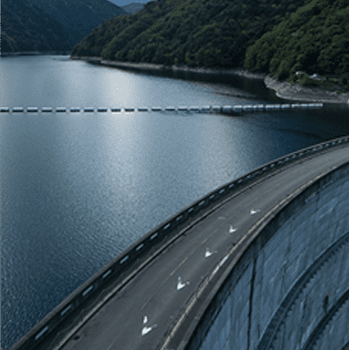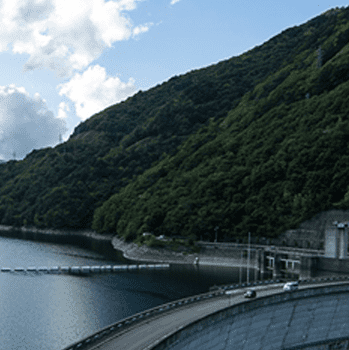Hydroelectric Power
For Japan, which lacks natural resources, hydroelectric power is a purely domestic source of energy that is stable and environmentally friendly.
The history of hydroelectric power production in the Kanto region dates back to 1892 with the commencement of operation of the Hakone Power Station, which is the first commercial hydroelectric power station in the Kanto region. (The second hydroelectric power station in Japan, following the Kyoto Keage Power Station which was the first hydroelectric power station and commenced operation in 1891.)
The scale of the venture started small with power being provided to only a small region in the vicinity of the power station. However, as the power station grew in size and technology to transmit AC power over long distances was developed it became possible for electricity generated at the power station to be provided to remote areas thereby marking the beginning of full-scale development. Then, Japan’s electric industry put hydroelectric power at the center of its power mix thereby marking the beginning of the age where hydroelectric power was supplemented by thermal power.
Thereafter in 1951, Japan’s electric power industry was privatized with the formation of nine electric companies and the construction of thermal power stations accelerated in order to address the lack of power in post-war Japan and the growing demand for it spurred on by the period of rapid economic growth. However, hydroelectric power was the main source of electricity for Japan until the coming of the age where thermal electric power was supplemented by hydroelectric power.
Even after entering this age where thermal electric power was supplemented by hydroelectric power, hydroelectric power remained a valuable base power source and pumping-up hydroelectric power stations were used to adjust the power supply/demand balance thereby playing an important role in the stable supply of electricity.
Managed by TEPCO Renewable Power, Inc., the TEPCO Group owns a total of 163 hydroelectric power stations on the Tonegawa River system in Gunma and Tochigi prefectures, the Shinanogawa River system that spans Nagano and Niigata prefectures, and the Sagamigawa River and Fujigawa River systems in Yamanashi Prefecture. These power stations produce a total output of approximately 9.88 milllion kW of electricity.
Furthermore, with the aim of developing power stations both in Japan and overseas that can produce a total of 6~7 million kW, in 2022, TEPCO Renewable Power, Inc. acquired 25% of the issued shares of PT Kencana Energi Lestari, a renewable energy company in Indonesia, making the company an affiliate.












